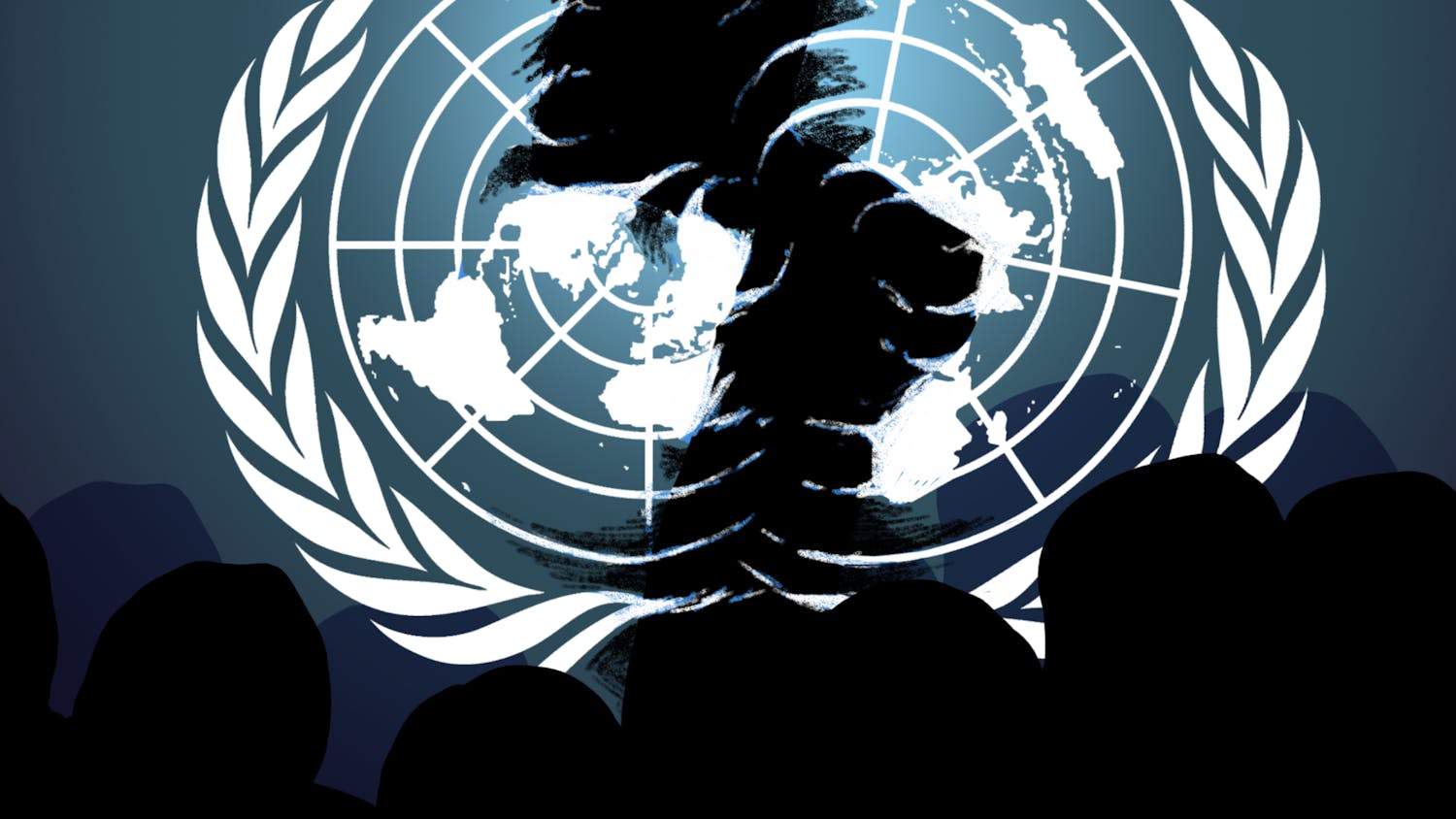“You can’t help screaming — [the torture] makes you writhe all over … We had hallucinations afterwards, we each lost five pounds from the torture sessions. We couldn’t talk straight. We had burns on our hands. They didn’t allow us to sleep for almost two nights running. We were threatened with rape from the beginning.”
This harrowing account by two sisters, detained and tortured under martial law in the Philippines, is just one of many testimonies in a 1976 Amnesty International report which uncovered the endemic torture and human rights abuses of political prisoners under former Philippine president Ferdinand Marcos Sr.
University of Wisconsin-Madison historian Alfred McCoy estimated that 70,000 people were arrested, 35,000 tortured and 3,257 killed under martial law in the Philippines.
My family lives in the northern part of the Philippines, a Marcos Sr. stronghold, since he hails from the province of Ilocos Norte. His cult of personality is so prominent that my Lola (grandma) insisted we drive eight hours north to see his remains when I was on one of my first trips to the country, at age six.
But with numerous conflicting narratives about the Marcoses blurring the distinctions between truth and reality, I wanted to develop a better understanding from someone who was actually there.
Martial law: A dark chapter in Filipino history
Martial law was declared in 1972 as Marcos was approaching the constitutional limit of two presidential terms. The official justification was quashing an ongoing communist insurgency. However, within hours of martial law being declared, Marcos’ strongest political opponent, Benigno “Ninoy” Aquino, was arrested despite lacking any ties to the insurgency. An initial 50,000 people were detained within the first few weeks of its declaration.
The majority of the imprisoned were common people, “not suspected communists.” Some were engaged in political criticisms of the Marcos administration’s failings, others were simply arrested for being at the wrong place at the wrong time. All were detained for extended periods without due process and without being told the charges levied against them. When the 14-year period ended in 1986, the communist threat was (and still is) ongoing.
Despite this dark chapter of Filipino history, Bongbong Marcos, the despot’s son, won the Philippine presidency in the 2022 April elections and questioned the legitimacy of the report. In an interview leading up to the election, he said, “Let us ask Amnesty International to share that information that they have and maybe it will help us make sure that the system works and what alleged abuses occurred should not occur again.”
While visiting my Filipino family during the lead-up to the 2022 presidential election, I attempted to interview both supporters of Ferdinand “Bongbong” Marcos Jr. and his opposition candidate, former Vice President Leni Robredo. I quickly gave up the effort when I tried to interview staffers in Robredo’s campaign office. Rather than supporting her campaign, the staffers I interviewed were actually Bongbong supporters who simply were doing a job.
However, this failed interview attempt does not diminish the active resistance against the Marcos family.
News organizations like Rappler have made an active effort to expose the terror of the Marcos era and promote remembrance of martial law human rights abuses. For this work, founder Maria Ressa received the Nobel Peace Prize in 2021.
Additionally, survivors of martial law torture have not remained silent through the ascension of Bongbong Marcos Jr. A coalition of activists, led by former political prisoner Bonifacio Ilagan, presented multiple petitions to the Philippine Election Commission on Bongbong’s ineligibility due to charges of tax violations. The Supreme Court, however, dismissed these petitions in a decision Ilagan lamented as a “an official stamp to the restoration and rehabilitation of the Marcoses.”
In spite of these valiant efforts, Bongbong Marcos won 29.9 million votes — almost double that of his closest competitor, Robredo.
When I contacted human rights activist, poet and photographer Thomas Jones — one of two Amnesty International lawyers who traveled to the Philippines where he interviewed political prisoners and published the titular 1976 report — I suppose I was looking for a way to make sense of what was happening. I sought reassurance that my family's country might be okay, but the answer was complicated.
Jones began the interview by showing me the documents he accumulated throughout his career in human rights. Among these documents lay undeniable proof of Amnesty International’s work in the Philippines, contrary to Bongbong Marcos’ feigned ignorance of the 1976 and 1981 reports and Marcos Sr.'s claims that Jones had never even visited the Philippines. One of the most damning pieces of evidence is a letter from the Philippine Embassy, which explicitly arranged a meeting between the Amnesty International lawyer and Marcos himself.
When describing Marcos, Jones characterized him as charismatic and “brilliant,” but throughout their meeting, he knew the dictator “put on a show” for the delegation. Jones said he was actually grateful to Marcos for “opening the door for us to go into the prison[s].” He credits the openness of the regime to Amnesty International being underestimated, as the mission to the Philippines took place prior to the organization winning its Nobel Peace Prize in 1977.
When asked if Bongbong shared the same brilliance as his father, Jones replied, “Not at all. He’s very weak… He’s not a leader. He's a tool of the forces of authoritarianism.”
Regardless of his level of intelligence, the Bongbong campaign has run a sophisticated crusade to rehabilitate the image of his family and promote the Marcos era as a “golden age” of stability and economic growth for the Philippines. Bongbong has further sowed disinformation in speeches and interviews. When questioned about the Marcos Family’s $10 billion dollars of ill-gotten wealth, he asserted such accusations were “fake news.”
This campaign of disinformation has been wildly successful. A widely circulated TikTok video discussing the findings of the Amnesty International report drew thousands of comments, including one which insisted that the late dictator was “a great leader destroyed by black propaganda.”
While social media has undeniably contributed to the erasure of martial law horrors in the popular consciousness, there are a multitude of other factors at play. The first is that the strategies used by the Marcos regime to hide the endemic use of torture against political prisoners was incredibly effective.
When preparing for his mission to the Philippines, Jones was aware there were political prisoners and that torture was being used as a means of “interrogration,” but he initially did not know the full extent of the human rights violations. Shortly after he landed in Manila, his partner, fellow lawyer Huang Wen-Hsien, whispered the situation was “much worse than we thought.”
The lack of information on the ongoing human rights crisis was a consequence of who the regime chose to detain and torture. The report found that the Marcos regime particularly targeted those who lacked connections. The regime further created a pervasive air of fear and silence by often also arresting wives, husbands, siblings and family members of individuals accused of engaging in subversive activity.
Money, guns and ships
The United States is a second factor in the rehabilitation of Marcos. While the U.S. government acknowledged the report and Jones testified in a hearing with the Congressional Committee on International Relations, military and developmental aid to the Philippines did not stop.
Furthermore, the United States military “trained many of the officers who interrogated and tortured prisoners, and supplied sophisticated weapons of surveillance and repression.” Despite the Carter administration’s official stance on human rights, no decisive action was taken against the regime due to American investment in the Philippines' naval bases and economy.
The most pervasive factor was a lack of reckoning after Marcos was ousted. In the surprisingly bloodless People Power Revolution of 1986, Cory Aquino, the wife of the aforementioned Ninoy who was assassinated in 1983, shocked the world by successfully ascending to the presidency. The 21-year rule of Marcos seemed to finally be over.
However, justice for most political prisoners would not be served. Many of the soldiers who perpetuated torture were never charged. After the initial Amnesty International report, the Marcos regime had “gone through the motions of prosecuting some soldiers whom prisoners have pointed out as having tortured them.” But many of these trials were held in military courts, which resulted in cases being “ultimately dismissed” or ending in acquittals. Some of these men returned to the service despite their flagrant violations of human rights.
In a young country where the majority of the population is too young to remember martial law, history has not been rectified. Martial law and the dangers of authoritarianism have not been enshrined in the education system or history books. The result? As Jones puts it, “People have been brainwashed into accepting it, and they've only heard one side of the story.” An example of reconciliation without reckoning.
Shining a light through social media
While social media is often framed as the driving force behind the return of the Marcos family to power, Jones provided a multitude of examples for how it can be used for good. In September 2022, Jones met Bonifacio Ilagan and Jose Habaca — who he interviewed nearly 50 years prior when they were detained as political prisoners — through a Zoom call. Such a reunion would be unthinkable without the advancement of technology.
The horrors of martial law are much harder to repeat in the age of mass information. The world is more connected than ever. International organizations like the Malaya Movement challenge the ahistorical counternarratives of the Marcos family. Promoting international solidarity and exposing human rights violations can now be done with a few clicks of a button and with a whole lot of courage.
“Truth casts a light,” Jones concluded. “And now the truth can cast a light easier across oceans. And then maybe that's the thought, that it's harder for crimes to be committed in darkness the way they were.”
I did find the reassurance I was looking for from my interview with Jones. I had spoken with a man who contributed to toppling the Marcos regime. I know the spirit of the People Power Revolution is not completely gone. With the emergence of social media, news of potential human rights abuses will travel faster than ever.
The world will be watching to see if Bongbong repeats the same abuses as his father, and I have all the faith in the world that the Filipino people, my family’s kababayan (countrymen), will challenge authoritarianism and overthrow evil where they see it.
Bea Millan-Windorski is a junior studying History, International Studies and Filipino (Tagalog) at the University of Wisconsin-Madison. Do you agree that martial law has not been properly remembered in the Philippines? Send all comments to opinions@dailycardinal.com.






